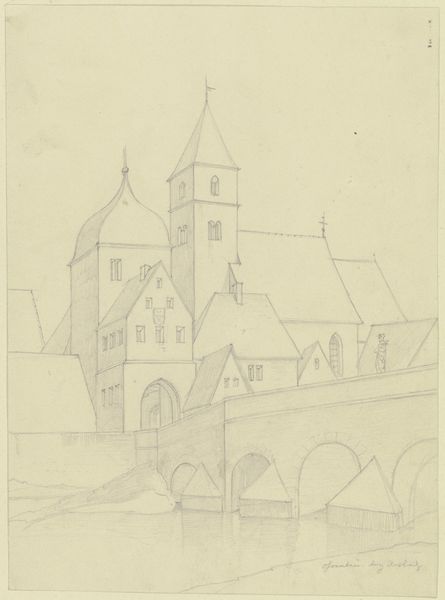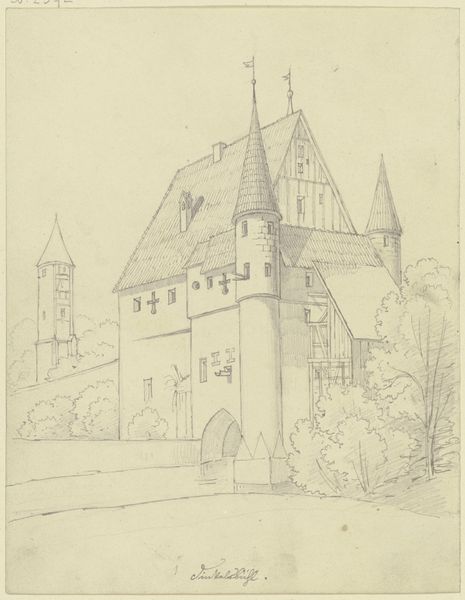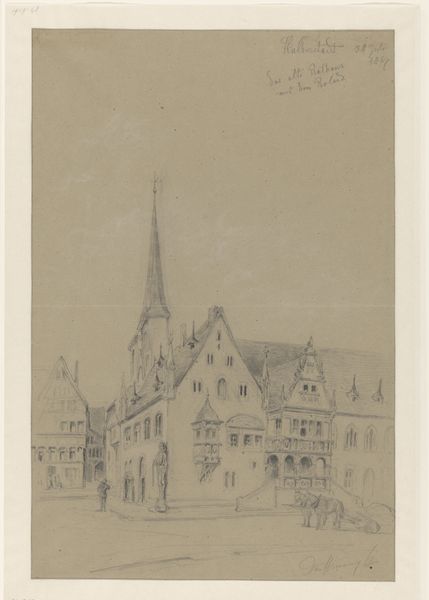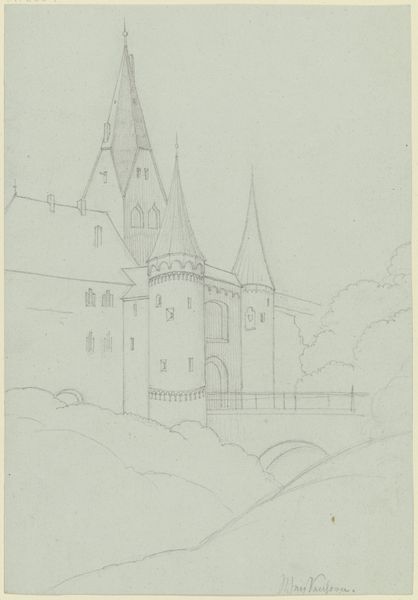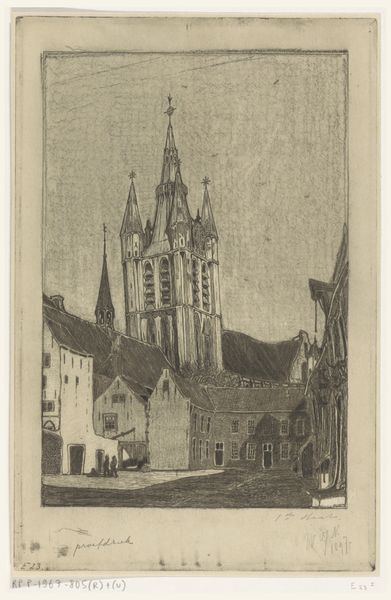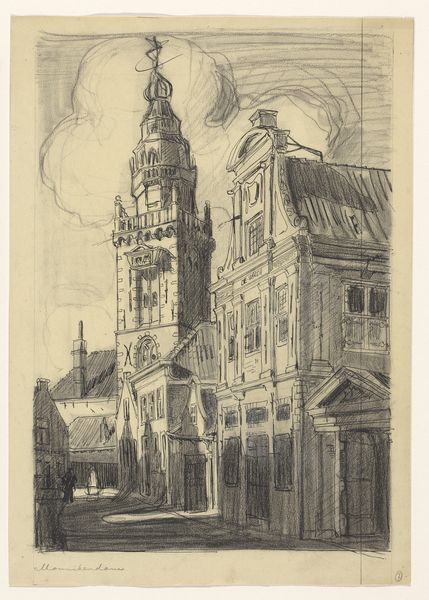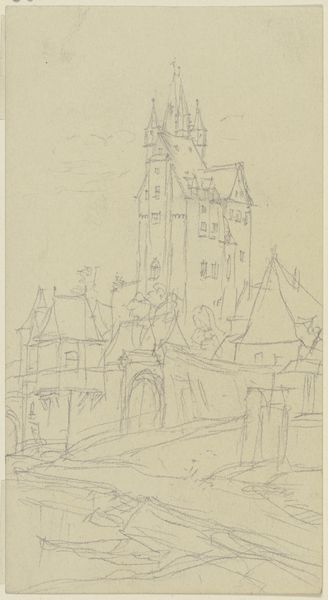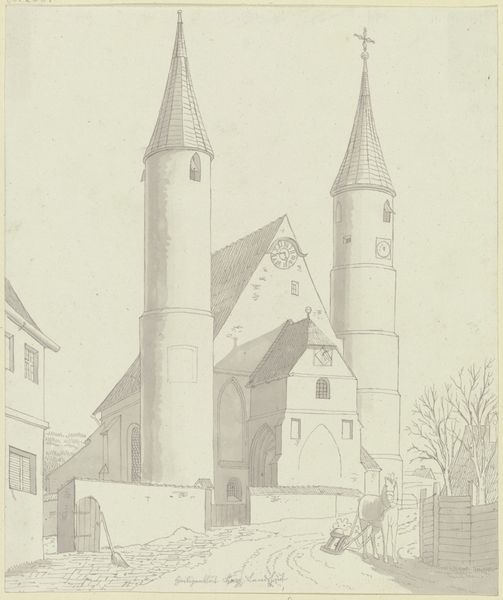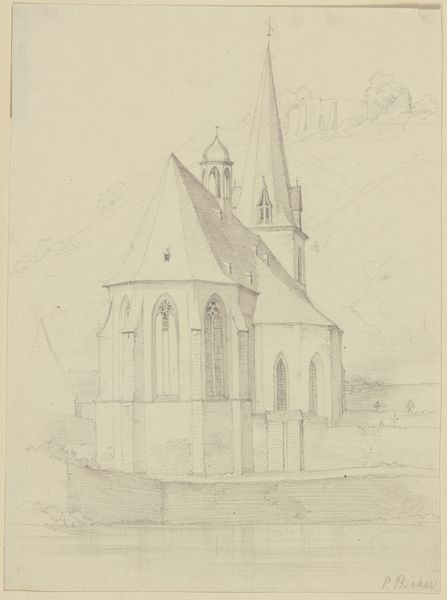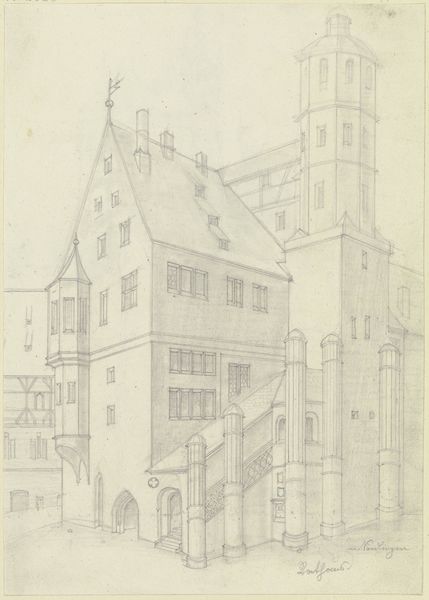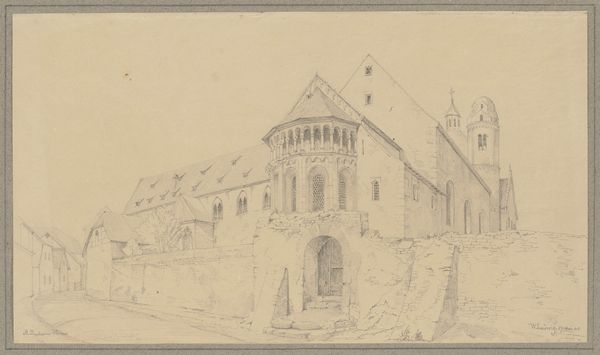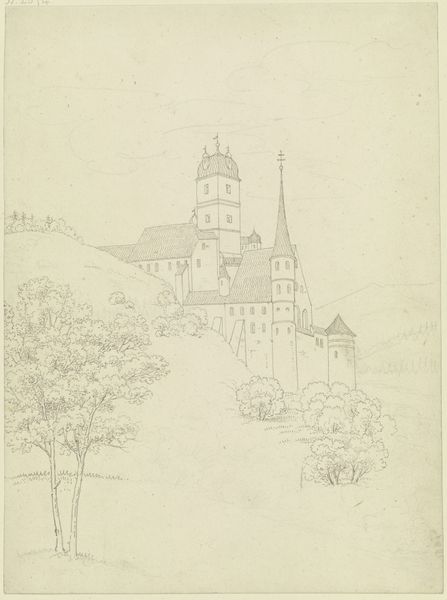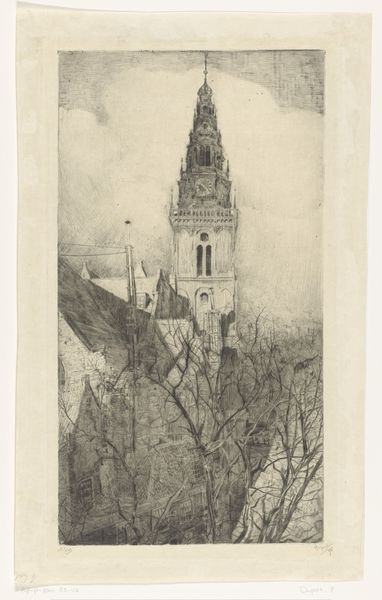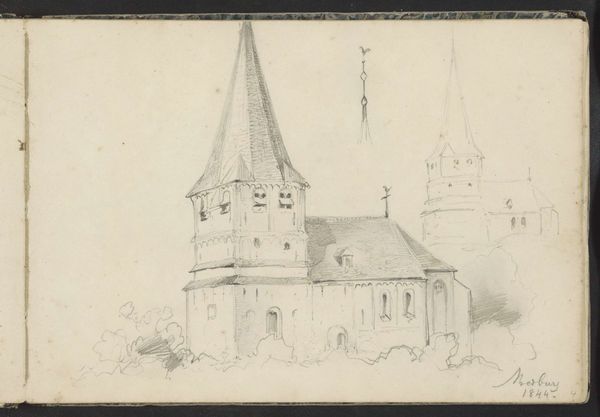
Dimensions: height 528 mm, width 353 mm
Copyright: Rijks Museum: Open Domain
Curator: This pencil sketch, “De Dom van Halberstadt,” is potentially from 1867, attributed to Jan Striening. What feelings does it evoke as you gaze upon it? Editor: Hmm, it feels spectral, almost unfinished. The scene appears shrouded in mist, which softens the architecture but makes me wonder what kind of social factors were happening to inspire a work like this? Curator: Absolutely! The softness of the pencil lines adds to the dreamlike quality, almost like glimpsing a memory. I sense that the paper’s texture adds to that fleeting moment, creating depth and shadowing for an ethereal scene. Editor: The sketch prioritizes verticality, with the cathedral dominating. One thinks about the effort needed for drawing, acquiring, and transporting all those tools and papers, versus just buying the image readymade in photographic form! It really is emphasizing a singular practice when, even then, other alternatives are available. Curator: It makes me wonder, was he simply trying to create an accurate architectural depiction or was Striening striving to capture its symbolic power? A connection to something beyond the purely physical? Editor: The contrast of scale—the immense cathedral juxtaposed with the more modest buildings—also touches on urbanization, where new economic structures began shaping social stratification as they changed the labor economy from within cities. I imagine how many materials were needed just to lay a single foundation. Curator: I do think it echoes a Romantic sensibility though. It's this evocative image, more than just technical blueprints or construction plans. Editor: Romantic for the artist, certainly, yet the pencil medium lends itself well to mass-produced images for those interested in architecture to replicate and implement similar designs, highlighting the availability and accessibility of materials for the budding enthusiast and architectural tourist. Curator: In any case, I am intrigued and amused to observe these differences and what both draw us to this image! Editor: Agreed! Viewing and understanding historical practices helps remind me how to contextualize materiality within a historical scope.
Comments
No comments
Be the first to comment and join the conversation on the ultimate creative platform.
